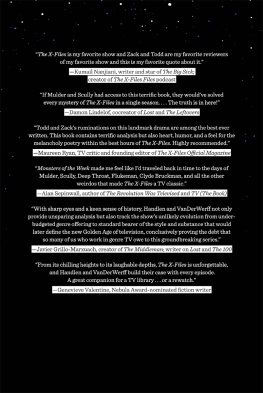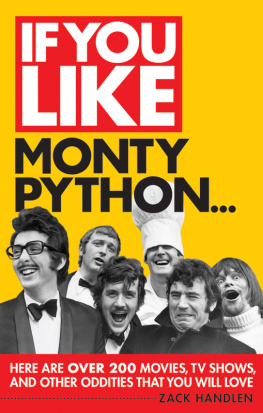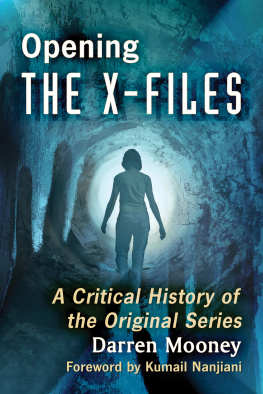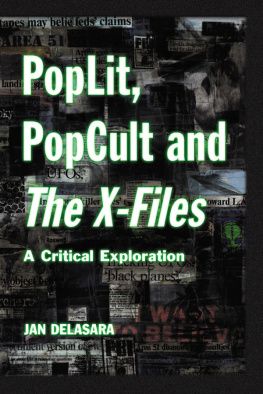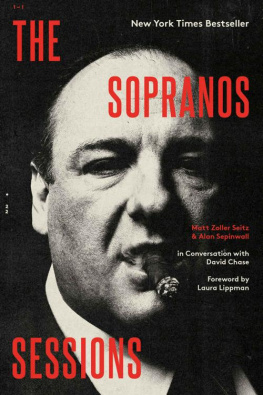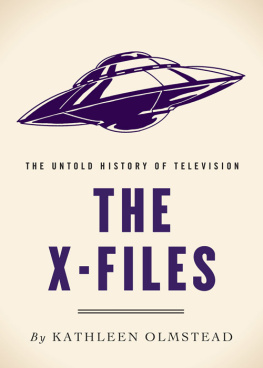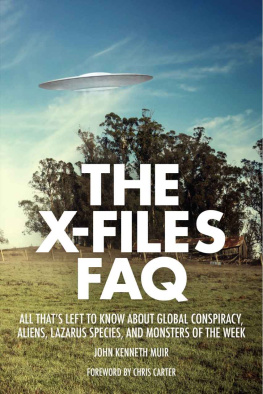
Text 2018 Zack Handlen and Todd VanDerWerff
Foreword 2018 Chris Carter
Illustrations and cover art Patrick Leger
Cover 2018 Abrams
Published in 2018 by Abrams Press, an imprint of ABRAMS. All rights reserved. No portion of this book may be reproduced, stored in a retrieval system, or transmitted in any form or by any means, mechanical, electronic, photocopying, recording, or otherwise, without written permission from the publisher.
Library of Congress Control Number: 2017956874
ISBN: 9781-419732478
eISBN: 9781-683353508
Versions of recaps of Seasons Two through Eleven of The X-Files, including crosstalk about Fight the Future and I Want to Believe, originally appeared on The A.V. Club (www.avclub.com); this material is reprinted and revised with The A.V. Clubs permission.
Abrams books are available at special discounts when purchased in quantity for premiums and promotions as well as fundraising or educational use. Special editions can also be created to specification. For details, contact specialsales@abramsbooks.com or the address below.
Abrams Press is a registered trademark of Harry N. Abrams, Inc.

ABRAMS The Art of Books
195 Broadway, New York, NY 10007
abramsbooks.com
FOR KEITH PHIPPS,
WHO MADE ALL OF THIS HAPPEN
IN THE FIRST PLACE
CONTENTS
FOREWORD
We came to Canada for the forests. The alien abduction of Billy Miles in the pilot episode of The X-Files was set in the woods, and after a fruitless search in Los Angeles for a pine grove passable as the Pacific Northwest, Charlie Goldstein, the head of production at Fox, suggested Vancouver. As it turned out, the choice to come here was a critical factor in the ultimate success of the TV series. We filmed more than a hundred episodes in Vancouver between 1993 and 1998; David Duchovny liked to say the pilot was two weeks of work that somehow turned into five years.
Id been to Vancouver before, when my wife was producing a Disney Sunday Movie in 1986. That movie, too, was shot in the forest, and I remember being awed by the size and density of the old-growth trees. That image has brought me back here again and again: for the original run of The X-Files, the first and second movies, and the last two event seriesa span of twenty-five years. And Im back now, even as my work on that show is done. Ive spent two weeks walking in the woods of Vancouver, under six hundred-year-old cedar trees, to reflect on the show, but also because I love it here. I could grow old here, and I have.
It isnt just the forests of Vancouver, of course; its really the city itself. Around every corner I come upon an image from the show. Alleys we shot from every angle. The tall statue in Glen Morgan and James Wongs riveting episode from the first season, Beyond the Sea. Pandora Street, where Bob Goodwin filmed some of the unforgettable images for The Erlenmeyer Flask. Car chase streets, foot chase streets, neighborhoods we returned to time and again. The Canadian Broadcasting Company, where we created the set for Mulders original basement office, and where Mulder and Scully met for that fateful first time. Remarkably, from one high vantage, I can scan at least twenty locations where I directed David and Gillian in episodes and a movie. Theres an old mental institution called Riverview where we, and so many others, spent hours, days, and long nights. We shot scenes there for the pilot and we were back once again in episodes 209 (My Struggle III), 210 (This), and 211 ([Plus One] in which Gillian, in the middle of a take, had to run away from a bear that had stepped out of the woods). We used so many Canadian locations that our original location scouts, Louisa Gradnitzer and Todd Pittson, wrote a book about thema book from which guided tours were led for fans reliving the shows best moments.
Im staying in the same hotel as we did in the pilot, full of memories itself. It was here I met Kim Manners in the bar and offered him an episode to direct. That was the first episode of more than eighty hed go on to direct, and more than 150 of which he produced. Along with Rob Bowman and David Nutter, Kims brilliance added to the show immeasurably. In Season Two, we got an order for twenty-five episodes, and after the first day of shooting, the unit production manager, J. P. Finn, had a note slipped under my door: One down, 199 to go. That was back when wed regularly shoot sixteen-hour days. One morning I woke up in my room here, threw open the curtains and saw a blizzard howling outside: a rarity in Vancouver. It was the first day of shooting Darkness Fallswhere else?in the forest. The crew worked through the snowstorm, getting trucks in and out in the slush and ice. Theyd all been through these provincial winters and took it in heroic stride.
Thats another thing that Vancouver provides: free atmosphere. If you shoot ten months of the year youll span all four seasons, which include long summer days and short winter nights due to the northern latitude. From September to late spring, you can count on gray days in low lightperfect for a show like The X-Files. The local crews here have learned to shoot right through the raina badge of pride in a town that loves rather than hates the precipitation that makes the city green and shiny all year. David once made a joke about the rain that was taken not a little unkindly.
But when we came back to do the event series nearly twenty years later, all seemed to have been forgiven. Its a testament to the best reason to be in Canada: its people. The crews here put The X-Files on the map. Id like to think we returned the favor, but Vancouver wouldve been called Hollywood North over time even without us. Yet I was reminded of just how gracious Canadians can be when I had dinner with Grace Gilroy recently. Grace produced each of the event seasons with a strong, gentle hand that made the work a joy to do. There was simply nothing I could throw at her that she hadnt dealt with before, and she always did it with equanimity and a smile or a laugh. In a business where nerves are often frayed, and where the dramatic arts are practiced behind the camera as much as in the front, she was a delight to work with.
The list goes on and on. Our production designer, Mark Freeborn, made the show not only look great but set a tone for the work. Craig Wrobleski took his sets and locations and lit them with an artists eye. Our team created an esprit de corps that made it all more than just another showbiz enterprise.
Good work was built on top of the good work that came before it, which is what Im really here to reflect on as I take my daily walks in the woods. If not for Bob Goodwin, the series original producer, there would have been no Grace Gilroy. If not for Kim Manners, there would have been no Carol Banker, who directed episode 214 (Kitten) and was the second woman director ever on the show. If not for Graeme Murray or John Bartley, there wouldve been no Freeborn or Wrobleski.
They say you cant go home again, and while its true that this isnt the Vancouver we knew in 1993, its a place we all think of as home, no matter where our lives have taken us. Gillian, of course, will be forever connected to this place through her daughter, Piper. Like me, David talks about coming back and spending time here apart from the show. It may be because there are some things here that will never change. The natural beauty and the forests are hopefully endless and enduring.
Next page
